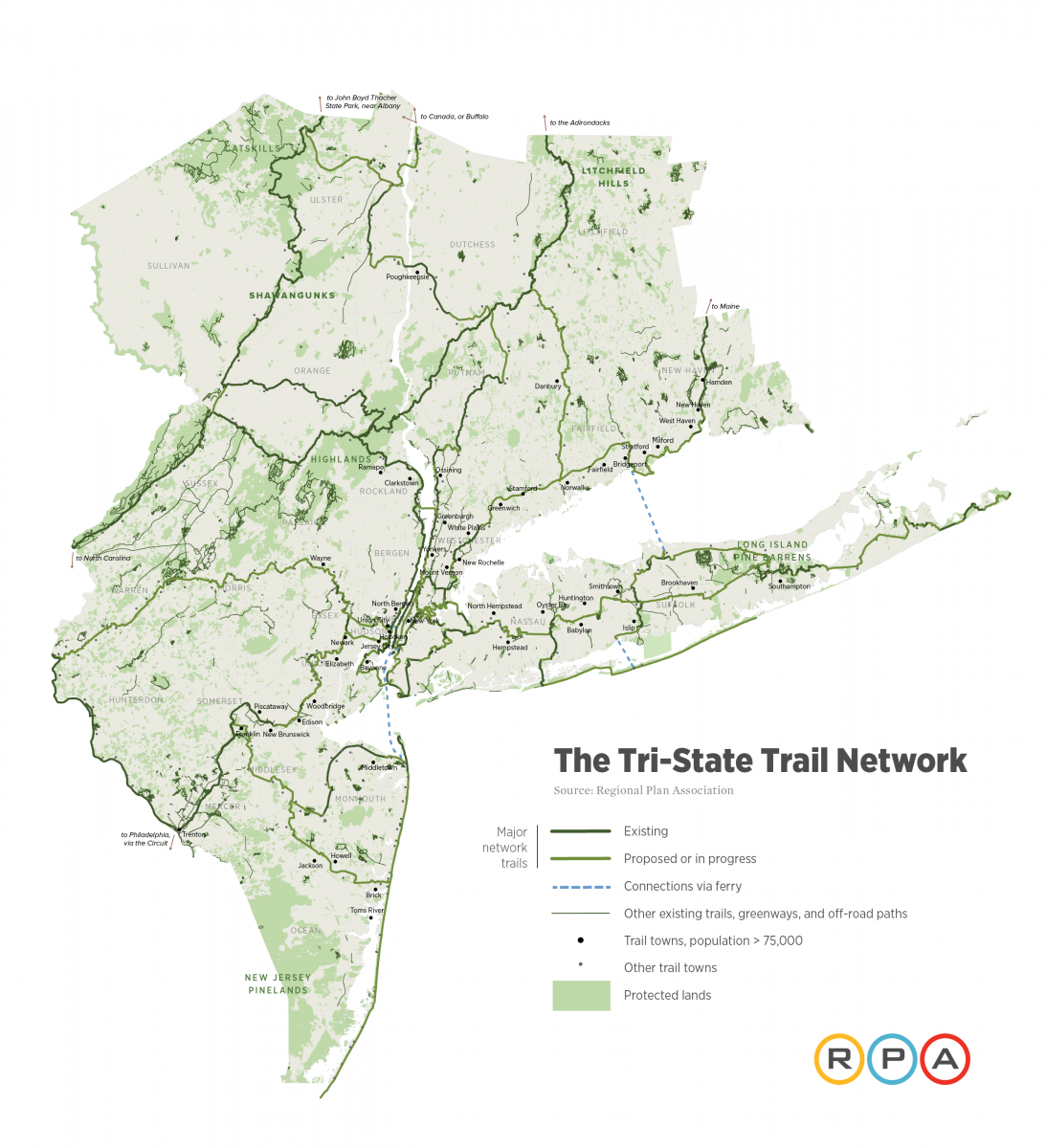The report also calls for building off of decades of work done by local and national organizations as well as local municipalities that have developed over 800 miles of the 1,650-mile network already. The concept would link existing trails and trails currently under construction – such as the Harbor Ring, Morris Canal Greenway, Merritt Parkway Trail, and Empire State Trail — and provide a larger vision to help unite local trails groups land trusts and federal, state, and local governments, and other community stakeholders to bring additional expertise and financial support to help expedite the development of these projects.
Read the full report
